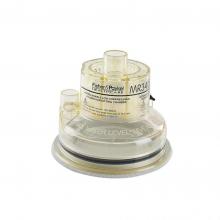Maintaining proper indoor climate conditions is essential for comfort, health, and operational efficiency. One of the most critical aspects of this control is humidification—the process of introducing moisture into dry air. Central to every effective humidification system is the humidification tank, which serves as the foundation for moisture delivery. Together, these components create an indoor environment that supports well-being and functionality in both residential and professional environments.
- Why Humidification Is Essential for Indoor Spaces **
Air that lacks adequate humidity can negatively affect everything from human health to sensitive equipment. Dry indoor air causes irritation of the eyes, throat, and skin, while also making individuals more vulnerable to colds, allergies, and respiratory discomfort.
Humidification counters these effects by adding just the right amount of moisture into the air. When properly controlled, it balances comfort with safety, helping to maintain the integrity of furniture, flooring, electronics, and even musical instruments. Maintaining stable humidity is crucial not only for comfort but also for preserving the indoor environment.
Proper humidification is not a luxury—it is a necessity, particularly in environments where heating or air conditioning is used extensively. Without adequate moisture, indoor air becomes unstable, leading to discomfort, health issues, and damage to assets.
- The Function and Importance of a Humidification Tank **
A humidification system is only as effective as its core component: the humidification tank. This tank holds and conditions the water that is transformed into vapor or mist and distributed through air ducts or vents. Its design directly impacts how efficiently the system delivers humidity.
The humidification tank ensures that water is available in sufficient quantity and quality. It may include heating elements, insulation, and cleaning mechanisms, all contributing to a safer and more effective moisture release. The tank construction materials and volume capacity are chosen based on the specific needs of the building or facility.
In high-demand settings, the humidification tank must be capable of delivering consistent humidity levels without interruption. Tanks that are poorly maintained or inadequately sized can lead to uneven humidity, system failures, and increased energy consumption.
- Integrating Humidification Systems in Modern Infrastructure **
Humidification has become an integral part of modern architecture and building design. Homes, offices, hospitals, museums, and laboratories increasingly incorporate humidification systems to maintain strict environmental standards. The humidification tank, as the water reservoir, plays a crucial role in sustaining these systems.
Proper integration involves not just placing the humidification tank in the system but ensuring it aligns with HVAC designs, energy efficiency goals, and indoor air quality standards. Professionals consider everything from water source connections to drainage and tank maintenance protocols during installation.
A well-integrated humidification system supported by a high-performing humidification tank adds value to a property by improving occupant comfort and reducing long-term maintenance costs associated with dry air.
- Challenges Without Proper Humidification and Tank Maintenance **
Neglecting humidification and the maintenance of the humidification tank can result in multiple issues. Low humidity levels may lead to static electricity buildup, drying out of materials, and adverse health effects for building occupants.
A malfunctioning or improperly sized humidification tank can introduce contaminants, produce insufficient vapor, or operate inefficiently, affecting the overall system. Water stagnation in the tank, mineral build-up, and leaks are common problems when routine inspections and cleaning are not performed.
Maintaining the tank’s hygiene and performance is key to long-term system efficiency. Regular inspections, descaling, and filtration help preserve water quality and system function.
- Conclusion **
Indoor environments thrive when moisture levels are balanced through effective humidification. At the heart of this process lies the humidification tank, the cornerstone of reliable and consistent performance. Understanding the role and maintenance needs of this essential component allows for healthier, more comfortable, and more energy-efficient spaces. Investing in both high-quality humidification systems and dependable humidification tanks is essential for anyone looking to control their indoor climate and protect the integrity of their environment.
